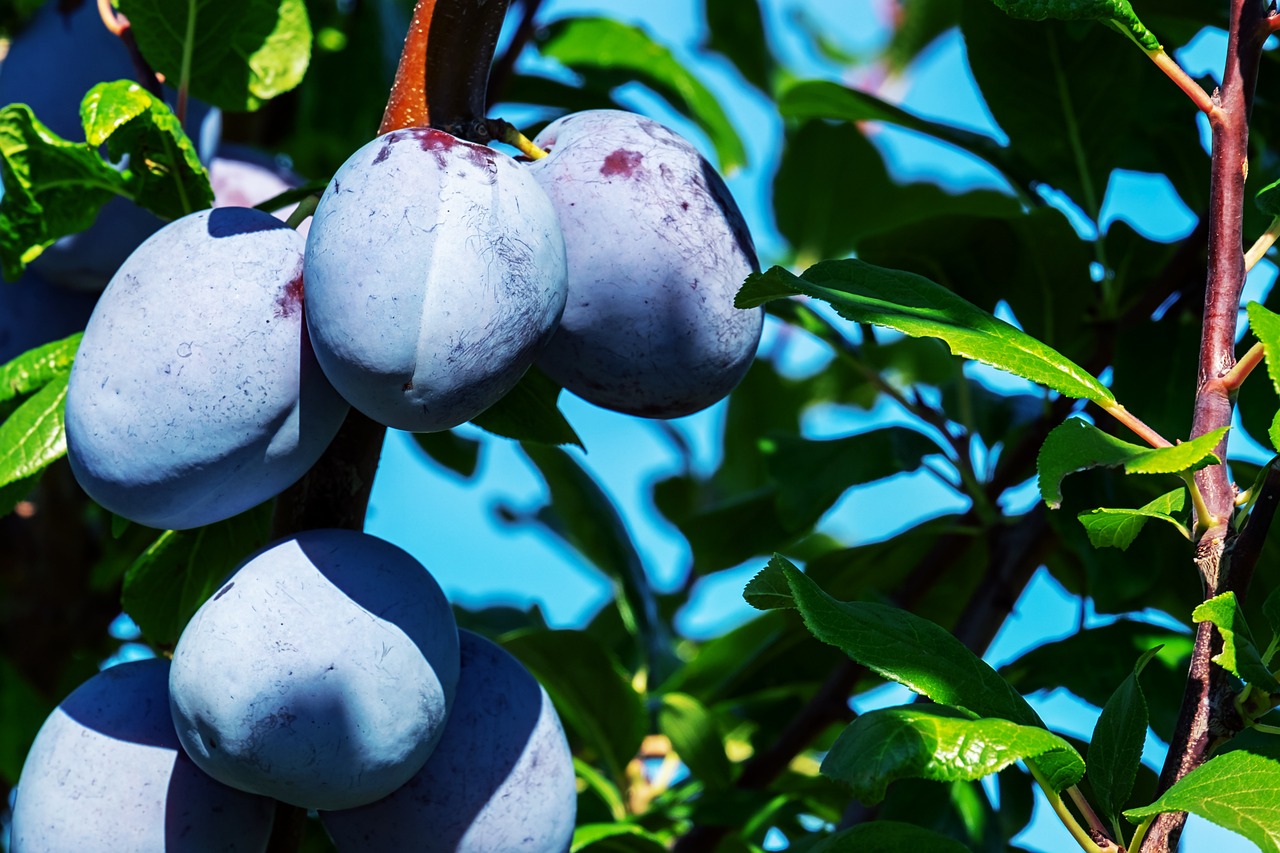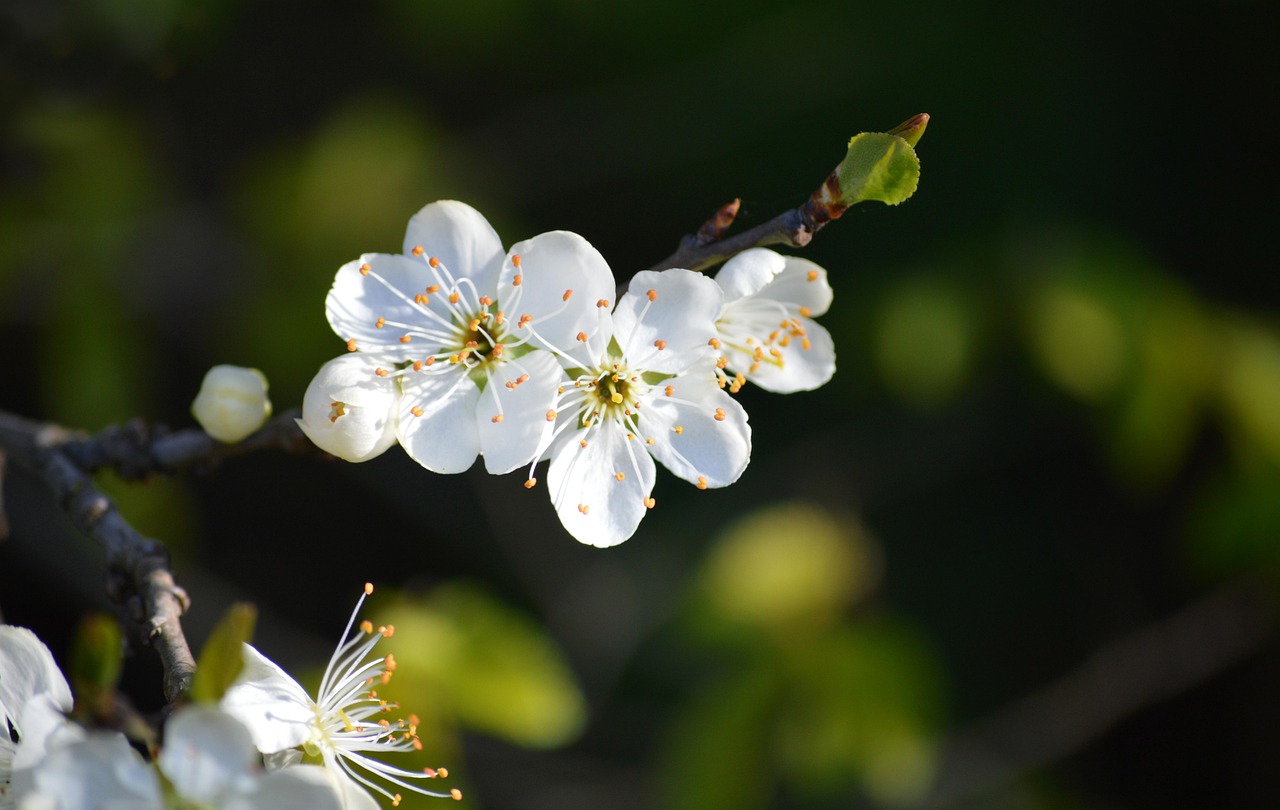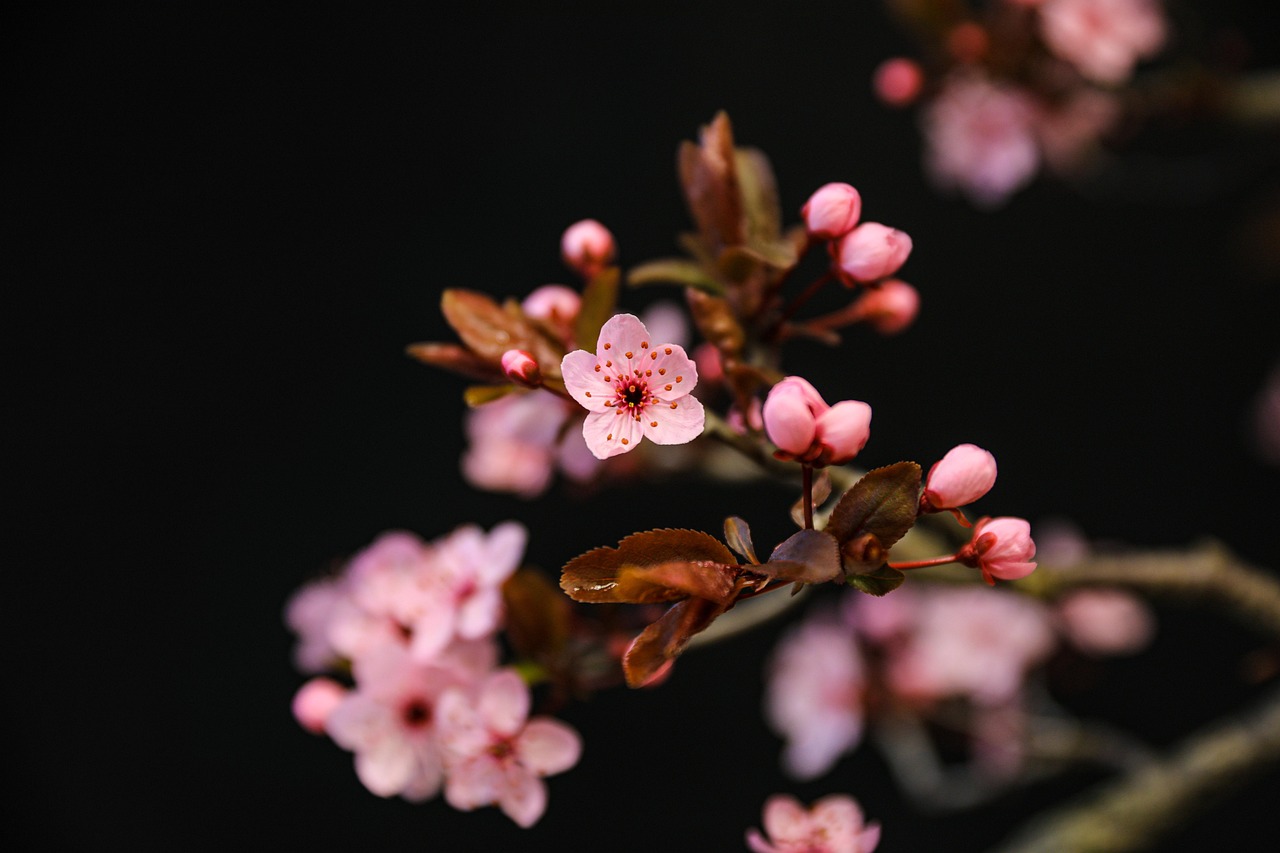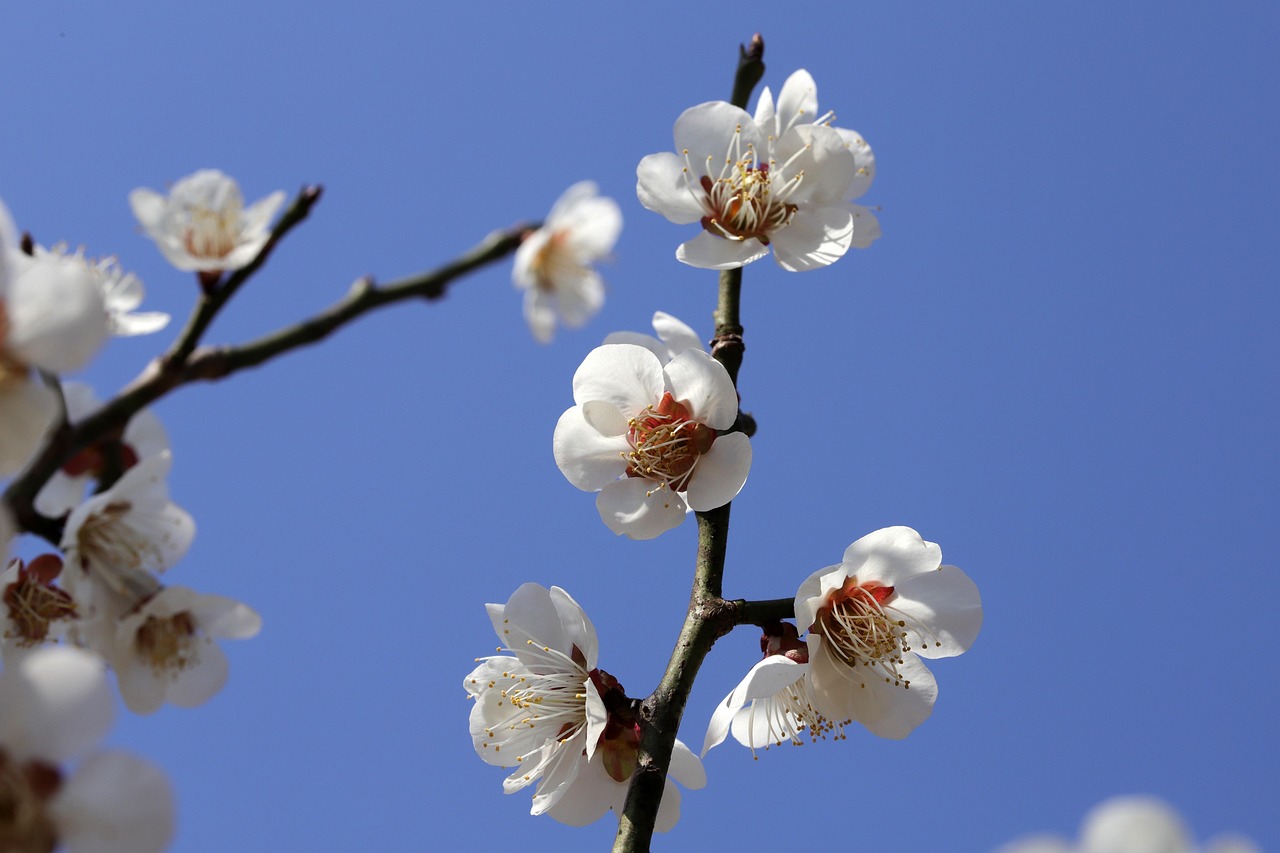Pruning Japanese plum trees is essential for maintaining their health and aesthetics in minimalist gardens. Proper pruning encourages better fruit production, enhances air circulation, and shapes the tree to fit the garden’s design. Essential techniques include thinning, shaping, and removing dead or diseased branches.
Understanding Japanese Plum Trees
Japanese plum trees, known scientifically as Prunus salicina, are cherished for their stunning blossoms and delicious fruit. Originating from East Asia, these trees thrive in temperate climates and can add a touch of elegance to any garden setting. In minimalist gardens, where simplicity and clean lines are key, careful pruning becomes even more important.

These trees typically grow between 15 to 25 feet tall and spread about 15 to 20 feet wide. They produce beautiful flowers in spring, followed by sweet, juicy plums that ripen during the summer months. Proper care and maintenance will not only enhance their aesthetic appeal but also ensure they contribute positively to the garden’s ecosystem.
Benefits of Pruning Japanese Plum Trees
Pruning offers several benefits for Japanese plum trees, particularly in minimalist gardens:
- Improved Air Circulation: Pruning opens up the canopy, allowing better airflow. This reduces the risk of fungal diseases.
- Increased Sunlight Exposure: A well-pruned tree allows sunlight to reach all parts of the tree, promoting healthy fruit development.
- Enhanced Aesthetic Appeal: Pruning shapes the tree, aligning it with the minimalist design principles of simplicity and elegance.
- Better Fruit Production: Regular pruning encourages the growth of new fruiting wood, leading to a more abundant harvest.
When to Prune Japanese Plum Trees
The timing of pruning is crucial to the health and productivity of Japanese plum trees. Generally, the best time to prune is during late winter or early spring before new growth begins. This timing helps minimize stress on the tree and reduces the risk of disease.

However, it is also important to consider the specific needs of your tree. For example, if you notice dead or diseased branches at any time during the growing season, those should be removed immediately to prevent further infection.
Essential Pruning Techniques
Several techniques can be applied when pruning Japanese plum trees to achieve desired results:
1. Thinning
This technique involves removing some branches to reduce crowding. Thinning encourages better air circulation and sunlight penetration.

2. Shaping
Shaping helps maintain the desired form of the tree. For minimalist gardens, aim for a clean silhouette with a balanced appearance.
3. Removal of Dead or Diseased Wood
Always remove any dead, damaged, or unhealthy branches. This practice not only improves the tree’s health but also maintains its overall appearance.
4. Cutting Back
If a branch is growing too long or out of shape, it may need to be cut back. This encourages new growth in a more compact form.

Tools Needed for Pruning
Having the right tools can significantly affect the quality of your pruning efforts. Here are some essential tools you will need:
- Pruning Shears: Ideal for cutting smaller branches and stems.
- Loppers: Useful for thicker branches that are too large for shears.
- Saw: A pruning saw is necessary for larger limbs that require more power to cut through.
- Gloves: Protect your hands from cuts and scrapes while working with branches.
Common Mistakes to Avoid
Pruning can be a delicate process. Here are some common mistakes to avoid when pruning Japanese plum trees:
- Over-Pruning: Removing too many branches can stress the tree and reduce fruit production.
- Poor Timing: Pruning at the wrong time can expose the tree to disease and hinder growth.
- Lack of Clean Cuts: Always use sharp tools to make clean cuts. Ragged cuts can lead to infections.
Caring for Your Tree Post-Pruning
After pruning, it is essential to care for your Japanese plum tree properly. Water it adequately, especially during dry spells. Consider applying mulch around the base to retain moisture and regulate soil temperature. Additionally, keep an eye on new growth to ensure your pruning efforts have been successful.
Understanding the Growth Habit of Japanese Plum Trees
To effectively prune Japanese plum trees, it is crucial to understand their growth habit. These trees typically exhibit a vigorous growth pattern, producing long, upright branches. Knowing how they grow can help you make informed decisions during the pruning process.
Japanese plum trees are known for their wide, spreading canopies. This characteristic means that as they grow, they can become quite dense. Dense growth can lead to issues such as poor air circulation and inadequate light penetration, which can negatively affect fruit production. Therefore, regular and strategic pruning is necessary to maintain a balanced structure.
Growth Stages and Their Impact on Pruning
Japanese plum trees go through various growth stages. Each stage has different pruning requirements:
- Young Trees: During the first few years, focus on establishing a strong framework. Remove any competing central leaders and select 3 to 5 main branches that will form the base of the tree’s structure.
- Mature Trees: For trees that are more than three years old, the emphasis should be on thinning and maintaining the shape of the tree. Regularly remove any crowded or crossing branches to keep the canopy open.
- Older Trees: For trees aged five years and older, more aggressive pruning may be needed. Focus on rejuvenating older wood by removing some of the oldest branches, which encourages new growth and fruiting wood.
Seasonal Considerations for Pruning
Pruning does not occur in isolation; seasonal changes play a significant role in determining the best practices for Japanese plum tree care. Understanding how different seasons affect tree health can improve your pruning strategy.
Spring Pruning
Spring is a pivotal time for many gardeners. In general, late winter to early spring is an optimal time for pruning Japanese plum trees before they enter their active growing phase. However, if you notice any dead or diseased wood, those should be removed as soon as possible.
Summer Pruning
Summer pruning is less common but can be beneficial for controlling growth and enhancing light exposure. If needed, trim back excessive growth during this period. Be cautious not to remove too much foliage, as it can stress the tree.
Autumn and Winter Care
During autumn and winter, avoid heavy pruning since trees are in their dormant phase. Instead, focus on monitoring the overall health of the tree and addressing any issues that may arise, such as pests or diseases.
Pest and Disease Management
Maintaining the health of your Japanese plum tree also involves managing pests and diseases. Various issues can arise, particularly if the tree is not pruned correctly or if it becomes too dense.
Common Pests
- Plum Curculio: This beetle can cause significant damage to young fruit. Regular inspections and timely interventions are essential.
- Aphids: These small insects can weaken trees by sucking sap. Keeping foliage well-pruned helps reduce their habitat.
- Spider Mites: Dusty foliage may indicate spider mite infestations. Ensure proper air circulation through diligent pruning to help manage these pests.
Common Diseases
| Disease | Description | Treatment |
|---|---|---|
| Brown Rot | A fungal disease causing fruit decay. | Remove infected fruits and branches; apply fungicides if necessary. |
| Crown Gall | Bacterial infection leading to galls on roots and stems. | Prune out affected areas; sterilize tools after use. |
| Leaf Spot | Caused by fungi, leading to dark spots on leaves. | Remove fallen leaves; apply fungicides to prevent spread. |
Creating a Minimalist Design with Japanese Plum Trees
In minimalist gardens, every element is vital to the overall aesthetic. Japanese plum trees can be used as focal points or integrated into a broader landscape design. Proper pruning plays a significant role in achieving this balance.
To create a sleek and modern look:
- Maintain Clear Lines: Prune branches that disrupt the clean lines typical of minimalist design. Aim for a symmetrical shape.
- Limit Height: Depending on your garden’s layout, you may want to keep the tree at a manageable height to prevent overshadowing other plants.
- Incorporate Hardscaping: Use stones or gravel around the base of the tree to enhance its minimalist appeal while providing good drainage.
By understanding the growth habits, seasonal considerations, pest management, and design integration of Japanese plum trees, you can ensure they thrive in your minimalist garden while maintaining their beauty and productivity.
Advanced Pruning Techniques for Japanese Plum Trees
Once you have grasped the basics of pruning Japanese plum trees, you can explore more advanced techniques. These methods can help maximize the tree’s health and fruit production while maintaining the aesthetic appeal of your minimalist garden.
1. Training Young Trees
Training young Japanese plum trees is essential for establishing a solid structure. This process involves guiding the growth of the tree to ensure it develops a strong framework:
- Central Leader System: Choose a single main trunk to act as the central leader. Select three to five lateral branches that are evenly spaced around the trunk. This method promotes a sturdy structure.
- Open Center System: For a more natural look, consider an open center approach. This method involves removing the central leader and allowing multiple branches to develop outward, creating an airy feel.
2. Renewal Pruning
Renewal pruning is a technique used primarily on older trees that have become overgrown or unproductive. This method encourages new growth and rejuvenates fruit production:
- Assess the Tree: Evaluate the overall health of the tree. Identify branches that are old, weak, or diseased.
- Remove Old Wood: Cut back older branches to a few inches above ground level or to healthy side shoots. This encourages new growth.
- Thinning: Thin out excessive growth to promote better air circulation and sunlight penetration.
Achieving Balance in a Minimalist Garden
In minimalist gardens, achieving balance is crucial. The placement of Japanese plum trees should complement other design elements while allowing for practical considerations such as space and light:
Spacing Considerations
The spacing of Japanese plum trees influences their growth and overall appearance. Here are some guidelines:
- Recommended Distance: Space trees at least 15 to 20 feet apart to allow for proper air circulation and growth.
- Layering Plant Life: Use lower-growing plants around the base of the tree to create layers without overcrowding the space.
Integrating Other Elements
Incorporating additional elements that align with minimalist aesthetics can enhance the presence of Japanese plum trees:
- Pathways: Use simple stone or gravel pathways leading to the tree, guiding visitors while maintaining clean lines.
- Seating Areas: Consider placing benches or seating areas nearby to allow for appreciation of the tree and its surroundings.
Watering and Nutrient Requirements
Proper watering and nutrient management are crucial for the health of Japanese plum trees. Understanding their specific needs can help ensure robust growth and fruitful harvests.
Watering Guidelines
During the growing season, particularly in hot months, Japanese plum trees require consistent moisture:
- Regular Watering: Water deeply once a week, especially during dry spells. Ensure that water reaches the root zone.
- Avoid Overwatering: Be cautious not to overwater, as this can lead to root rot and other issues.
Nutrient Requirements
Nutrient management plays a vital role in fruit production:
- Fertilization: Apply a balanced fertilizer in early spring as new growth begins. Look for fertilizers with equal parts nitrogen, phosphorus, and potassium (N-P-K).
- Soil Testing: Conduct soil tests periodically to determine nutrient levels and adjust your fertilizing strategy accordingly.
Pest Control Strategies
Effective pest control strategies are essential for maintaining healthy Japanese plum trees. Here are some methods to consider:
Cultural Practices
Cultural practices can help prevent pest infestations:
- Sanitation: Regularly clean up fallen leaves and fruits to reduce breeding grounds for pests.
- Avoid Overcrowding: Prune trees adequately to maintain open canopies, which discourages pest habitats.
Natural Pest Management
If pests do become a problem, consider natural pest management techniques before resorting to chemical treatments:
- Biodiversity: Encourage beneficial insects like ladybugs and lacewings that prey on harmful pests.
- Neem Oil: Use neem oil as a natural pesticide to deter various pests without harming beneficial species.
Final Touches on Maintenance
The maintenance of your Japanese plum trees should extend beyond just pruning. Here are some additional tips for ensuring their health and beauty in a minimalist garden setting:
- Mulching: Apply organic mulch around the base of the tree to retain moisture and suppress weeds.
- Regular Inspections: Routinely inspect your trees for signs of pests or diseases to address issues early.
- Seasonal Cleanup: After leaf drop in autumn, clean up fallen debris to prepare for the next growing season.
By implementing these advanced techniques and maintenance strategies, you can ensure your Japanese plum trees flourish in harmony with your minimalist garden design while maximizing their beauty and productivity.
Seasonal Considerations for Long-term Success
Maintaining Japanese plum trees in a minimalist garden requires attention throughout the seasons. Understanding how to care for your trees during each season can lead to greater success and aesthetic appeal.
Spring Care
Spring is a busy time for gardeners as life returns to the landscape. During this season, focus on the following:
- Fertilization: As the trees begin to bud, apply a balanced fertilizer to promote healthy growth and fruiting.
- Pruning: Complete any final pruning before new growth starts. This is crucial for shaping the tree and ensuring that air can circulate freely.
- Pest Monitoring: Keep an eye out for early signs of pests or diseases. Early intervention can prevent larger issues later on.
Summer Maintenance
During the summer months, the focus shifts to growth management and fruit development:
- Watering: Ensure consistent watering, especially during hot spells. Deep watering is essential for root health.
- Thinning Fruits: If your tree produces an abundance of fruit, consider thinning to allow remaining fruits to grow larger and healthier.
- Weed Control: Regularly check for weeds around the base of the tree, as they can compete for nutrients and water.
Autumn Preparations
As autumn arrives, it’s time to prepare your trees for the winter ahead:
- Harvesting: Collect ripe plums promptly to avoid attracting pests.
- Final Pruning: Light pruning may be necessary to remove any dead or diseased branches.
- Mulching: Apply a fresh layer of mulch around the tree base to protect roots from frost and retain moisture.
Winter Care
Winter care is critical for preventing damage from cold weather:
- Protection: Consider wrapping young trees or using protective barriers against extreme cold or heavy snow.
- Tool Maintenance: Clean and sharpen your pruning tools during winter months to prepare for the upcoming season.
Aesthetic Integration with Other Plants
In a minimalist garden, integrating Japanese plum trees with other plants can enhance their visual impact. Consider the following approaches:
Companion Planting
Choosing complementary plants can create a harmonious environment:
- Ground Cover: Use low-growing ground cover plants like creeping thyme or sedum around the base of the tree to prevent weeds and add texture.
- Vertical Elements: Incorporate trellises with climbing plants nearby to draw the eye upward and create depth in your design.
- Boulders and Stones: Strategically placed stones or boulders can enhance the natural aesthetics while providing a minimalist touch.
Color Palette Considerations
Select plants that complement the colors of the Japanese plum tree throughout its seasonal changes:
- Spring Blooms: Pair your plum tree with spring-blooming flowers in whites and pastels that harmonize with its blossoms.
- Summer Foliage: Choose drought-tolerant perennials with vibrant green foliage that contrasts beautifully with the tree’s leaves.
- Autumn Colors: Incorporate plants that display rich fall colors to enhance the autumnal appeal of your garden.
Final Thoughts
Caring for Japanese plum trees in minimalist gardens can be a rewarding experience. By understanding their unique requirements and integrating them thoughtfully into your design, you can create an aesthetically pleasing environment that highlights their beauty and functionality.
The key takeaways include mastering effective pruning techniques, employing seasonal care practices, and strategically incorporating these trees into your overall garden design. Additionally, maintaining vigilance against pests and diseases will ensure your trees remain healthy and productive.
With consistent care and attention, Japanese plum trees can thrive in minimalist gardens, providing not only visual interest but also delicious fruit for years to come. This balance between form and function is what makes gardening both an art and a science, allowing you to enjoy the fruits of your labor while maintaining a serene outdoor space.
